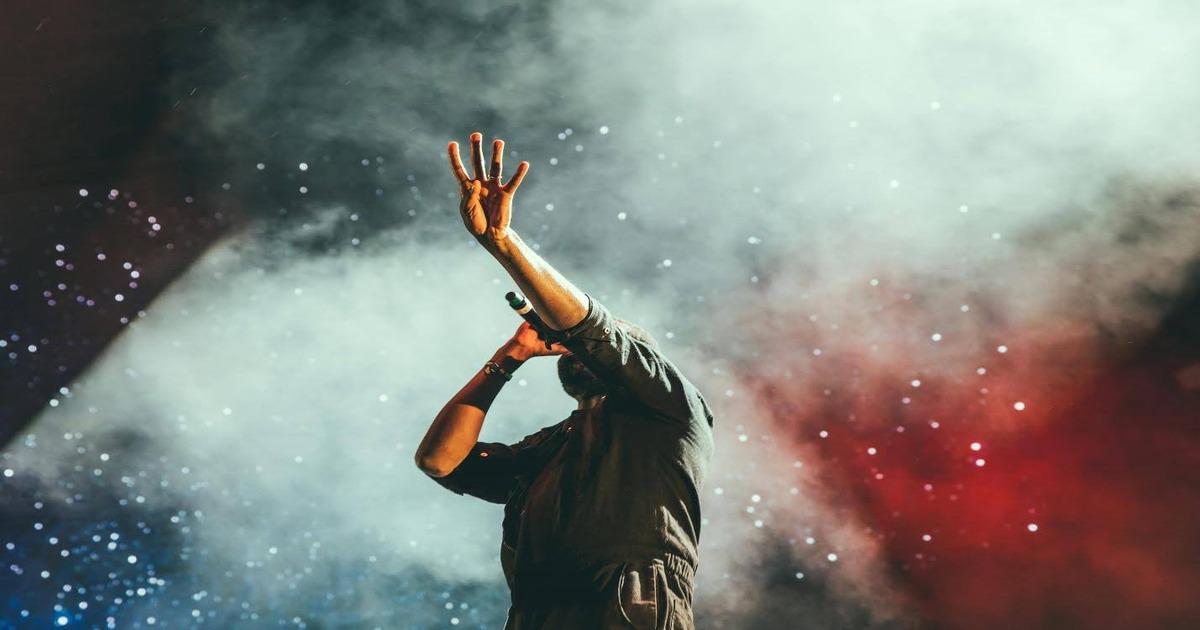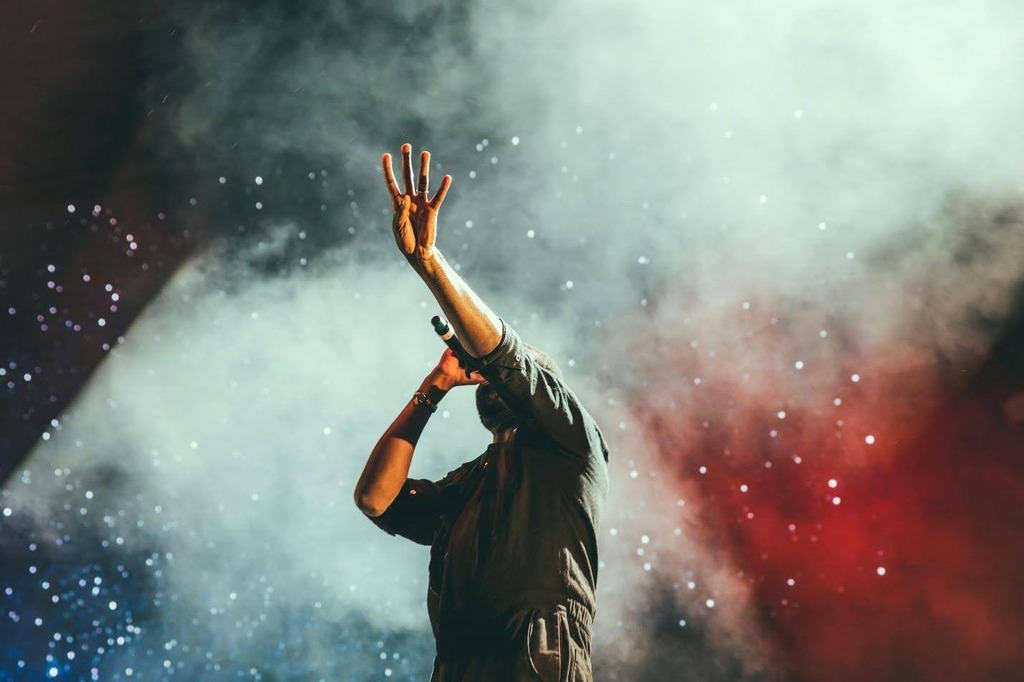Music as a multi-sensory, immersive experience: Case studies of Grimes and Björk
In the digital age, music is no longer narrowed to sound alone— it engages multiple sensory and cognitive channels to create a richer experience. As technology evolves and artistic frontiers wane, the practice of creating, sharing, and consuming music is changing forever.
Music has long expanded beyond the mere concept of live performances and audio recordings. Today’s music is part of an immersive environment that blends visual elements, colors, and textures with sound, creating a deep connection that usually sends chills down the audience’s spine – purposefully. This shift shows a bigger trend in modern art, where mixing different media types creates more interesting experiences that connect with how people use technology. Pioneers Grimes and Björk are only two titans who have opened new horizons for musicians and revolutionized this art form forever.
Photo source: https://unsplash.com/photos/man-in-gray-quarter-sleeved-shirt-singing-hgO1wFPXl3I
Sound and imagery intertwine
Online platforms and virtual galleries have turned into spaces where vision and sound come together, giving artists unmatched opportunities to experiment with art. Today, music consumers are no longer limited to simply listening to music; instead, you can see and feel it through interactive visuals, and even participate in its making. Music production, performance, and digital art can act as a unitary discipline and give way to new genres that challenge what people have understood through music so far.
Digital tools’ accessibility redefines creativity
Digital tools are becoming increasingly sophisticated and accessible. There’s now software that completely reshapes how artists engage with music production, used in creating content involving virtual reality (VR), augmented reality (AR), artificial intelligence (AI), and immersive visuals. The resulting pieces engage multiple senses at the same time. Key market players like streaming platforms and online art galleries are evolving to support these hybrid models, offering inspiration and spaces that place sound and visuals on par. This multimedia approach aligns with the goals of audiences who look for more meaningful and consistent connections with art, with a focus on content that can reflect both their emotional and inner worlds and their ever-digitalized lives.
Why this fusion matters so much
The fusion of music and high-concept digital visuals discloses a broader change in how audiences engage with art. Art spaces’ evolution, with VR exhibitions, multimedia installations, and online art galleries leading the pack, offers artists new tools to communicate complex ideas and emotions—ones that sound or visuals alone might not fully capture. Consequently, musicians have gone beyond being merely hitmakers. They’re now full-spectrum art architects and create depth-infused, immersive, and multi-sensory experiences.
This cross-medium approach has audiences interacting with and exploring an artist’s world in multi-dimensional ways, instead of simply hearing a song or viewing an art piece. Just look at the work of innovative artist Björk for a clear example. The Icelandic woman seamlessly combines pop and avant-garde elements in her music, creating content that’s just as revolutionary as it’s stirring. Grimes is also a notable example, as you’ll come to learn.
Björk: the digital alchemist, and possibly the best-known Icelandic individual ever
Icelandic singer Björk is known for pushing the limits of music’s existence in time and space long before the digital explosion of the 2010s. Her work stands out through a combination of tech, visual art, nature, and music, resulting in a holistic experience. Ten studio albums have so far been released under the solo artist’s name, each with its unique identity.
One project stands out as a groundbreaking example: Biophilia. Rather than a traditional album release, this release is an ecosystem of interactive apps, live performances, and installations. Each song corresponds with an app that allows listeners to explore musical and scientific concepts elevated through visuals and turning sound into something tactile and spatial.
Björk’s use of VR, AR, and AI continues to open up new horizons. Her 2019 Digital exhibition, an immersive VR exhibition showcasing video and digital works, toured major cities worldwide. It left a lingering impression through the fusion of music and art, which managed to build immersive environments where audiences explored the artist’s work in entirely new ways.
Grimes: another pioneer known for its eclectic and unconventional approach to music
Grimes, by her real name Claire Elise Boucher, is a Canadian singer-songwriter who found her creative calling in music after being expelled from McGill University. She launched her debut album, Geidi Primes in 2010, gaining inspo from Frank Herbert’s Dune novels, followed by her 2012 album, Visions, which is known as her biggest hit to date. Lead singles “Oblivion” and “Genesis” keep making waves and are featured on TV, TikTok, and other digital spaces. All of these milestone achievements reconfirm her irreversible impact on popular culture. On Spotify only, she has over 700MN streams.
Her music videos are often associated with immersive digital art installations. They feature surreal imagery, futuristic landscapes, and DIY digital effects that echo themes of technology, mythology, and identity. How she integrates visual and auditory elements makes her work feel like entering a newfound digital reality.
From the very beginning, Grimes’s aesthetic has been inseparable from her sound. And in recent years, she even hopped on the NFTs (non-fungible tokens) bandwagon, releasing multimedia pieces that blend animation, music, and interactive visuals. Notably, she has stated to have earned more from this type of art than all of her music combined, managing to bank $5.8MN in only 20 minutes via NFT sales.
Bringing more art forms together via tech.
Digital tech makes art forms fluid and mergeable. Visual art, music, performance, and technology create new hybrid genres. These aren’t just album releases or gallery exhibitions—they’re comprehensive creative ecosystems where sound and visuals coexist and feed each other into revelation.
As tech advances, the line between sound and vision will continue to blur. VR, AR, AI, and NFTs provide exciting tools for artists to develop and capitalize on new art forms. You can expect more artists to follow in the footsteps of Grimes and Björk by crafting immersive, interactive digital worlds that challenge what consumers understand through art and music. Online platforms become critical hubs for these experiences, where fans not only consume but participate, remix, and co-create.

Premium music analytics, unbeatable price: $19.90/month
11M+ artists, 100M+ songs, 19M+ playlists, 6K+ festivals and 100K+ labels on one platform, built for industry professionals.



